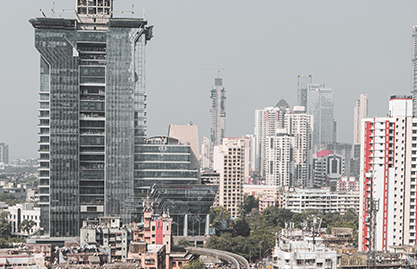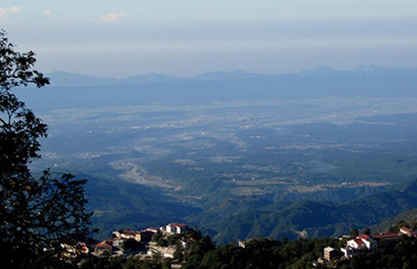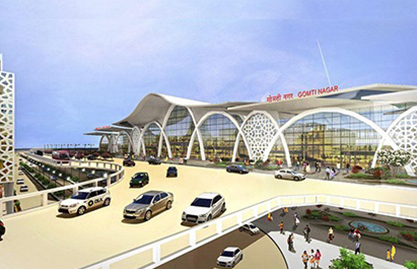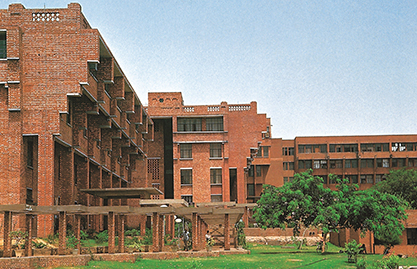What Makes ‘Tropical Architecture’ By C P Kukreja A Timeless Treatise
Published in 1978, the book ‘Tropical Architecture’, is based on our founder CP Kukreja’s master’s thesis at the University of Manitoba, Canada. – ‘Design of Buildings in the Tropics.’It brings to attention many design solutions as a reference for designing in tropical climates or regions.
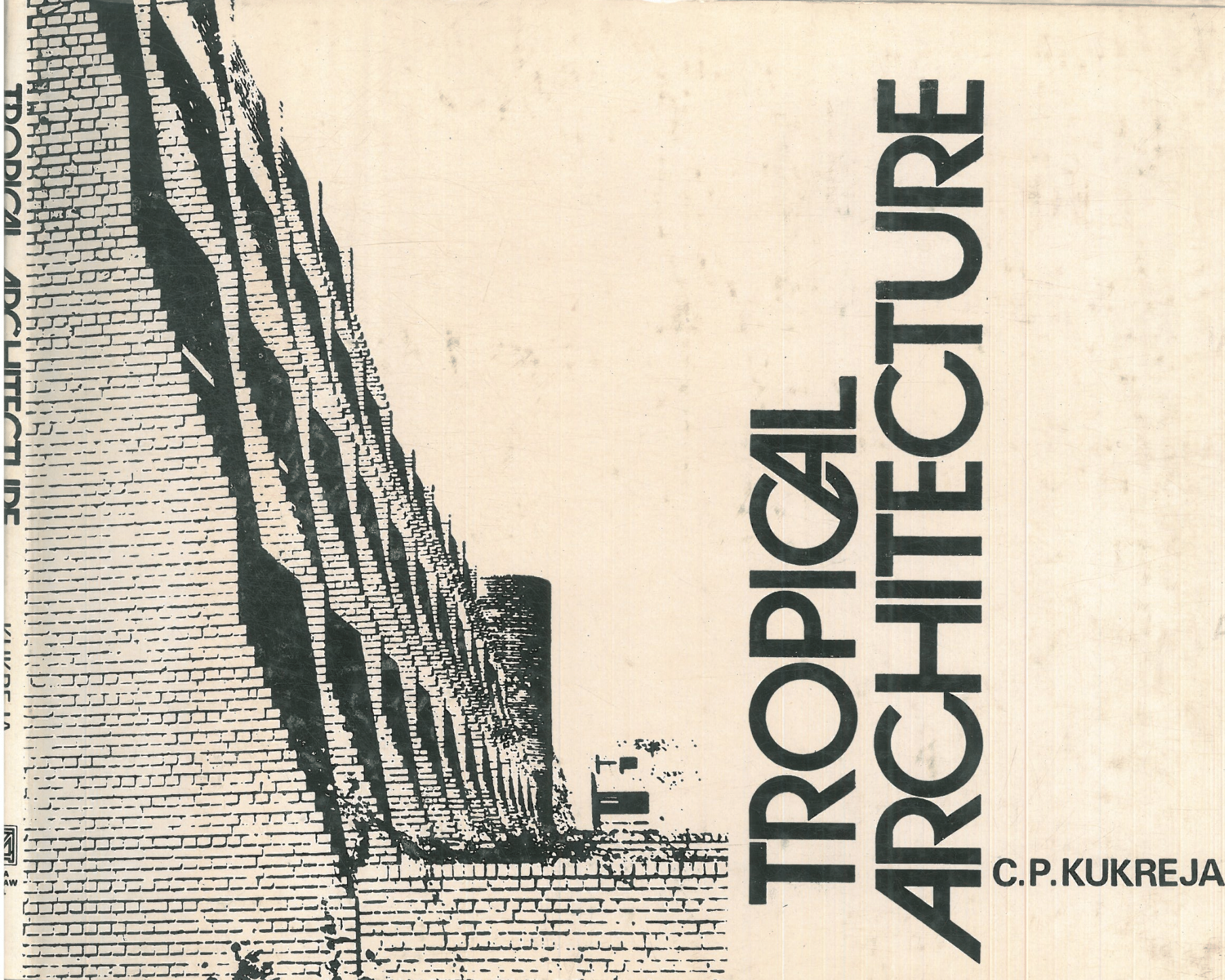
Cover of ‘Tropical Architecture’ by C.P. Kukreja
The book cites the traditional architecture and construc tion techniques adopted by countries in different climatic zones, from the arid Arabian regions to the humid Southeast Asia region. These are analysed to solve some of the problems posed by their regional climatic conditions. The incorporation of these traditional features is suggested and illustrated within the matrix of technological developments like new methods of construction, new materials of construction, new methods of ventilation, and air conditioning. In a way, the book tries to assimilate the new and old techniques that provide solutions for architectural design issues, considering the varying physical, social, and economic factors in the tropics.
Tropics and Climate
A region's climate and physical environment are crucial factors that influence the design and construction of its human dwellings and settlements. In constructing shelters over the centuries, we have always considered these factors resulting from the local technology, materials, climatic factors, and social conditions. With their varied climatic, physical and social environments, tropical countries still retain and reflect these traditional features of planning in their buildings and towns to varying degrees. The book seeks to study climatic factors and their influence on the design of buildings in the tropics.
Climate and Architectural Evolution
Climate has had a dominant influence on architecture throughout history. Socrates made explicit commentary on the sun path and the corresponding arrangement of spaces in a house. Similarly, Vitruvius outlined his ideas on the design of individual buildings and the layouts of towns taking into account various climatic factors.
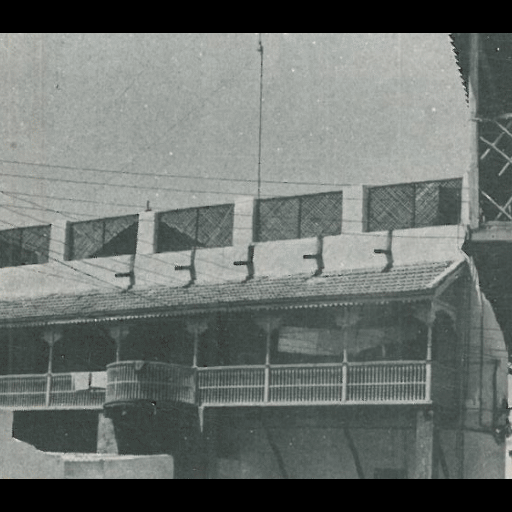
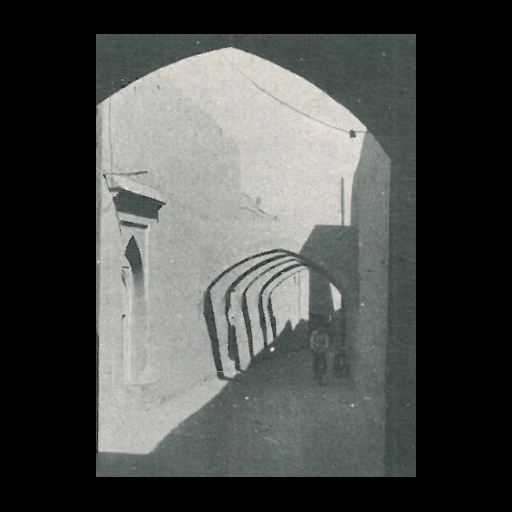
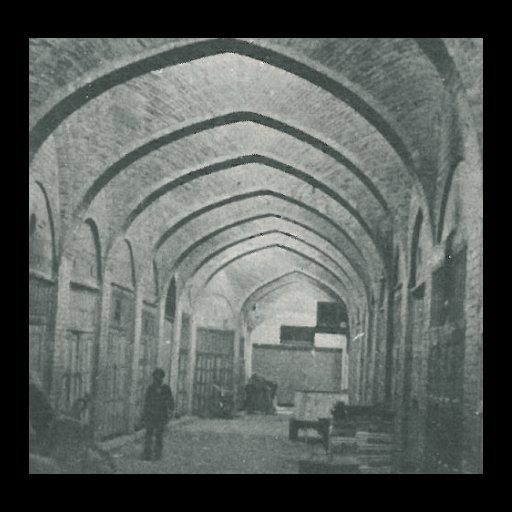
Buildings in South Iran as illustrated in the book
Many architectural solutions can be found in the tradition al architecture of Arab countries — for instance, cantilevered balconies and delicately formed wood lace - work to keep the intense sun out. In India, one sometimes encounters an entire street covered from top to bottom with facades of gracefully carved balconies. However, the twentieth century brought new dimensions to our living conditions and the environment through successive industrial and scientific revolutions. In addition, the invention of various 'comfort gadgets', like air conditioning, and the use of new materials and building techniques have altered our approach to the design of buildings.
Design Strategies for Tropical Regions
There is no doubt that to practice architecture today, one must understand the art, science, and technology of our times. Though architectural principles may be universal, they have to be applied in a particular environment, and climate is the most important environmental factor to be considered in the design and construction of buildings.
To design a building correctly, architects must familiarise themselves with the position and intensity of the sun at all times of the year. In the tropics, the natural concern is to exclude as much heat as possible from living areas. This can be achieved through appropriate orientation of the spaces in relation to the sun or by using shading, reflection, insulation, etc. Similarly, the prevailing wind currents must be studied to design according to the desired effect of gaining or blocking the type of wind according to the time of the year.
Window design plays a vital role in both cases, as well as in facilitating natural ventilation. Based on the wind patterns and building orientation, the designer can determine appropriate window numbers, sizes, and locations to provide comfort in hot and humid climates. When it comes to building materials, Bamboo, Palm frond stems, earth and mud bricks, natural stone,timber, etc., that are locally available in the tropics are used. These can be employed with modern building materials to yield better results in combating the climate.
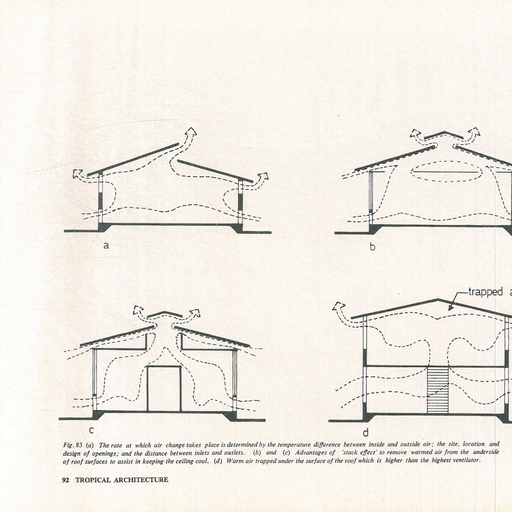
Ventilation studies in the book
The book expands on such strategies to educate architects on designing dwellings in hot andarid or hot and humid climates. For an easier understanding, design analysis is provided at the end of the book, which explains the design in terms of orientation, planning, roofs, walls, openings, and interiors.




